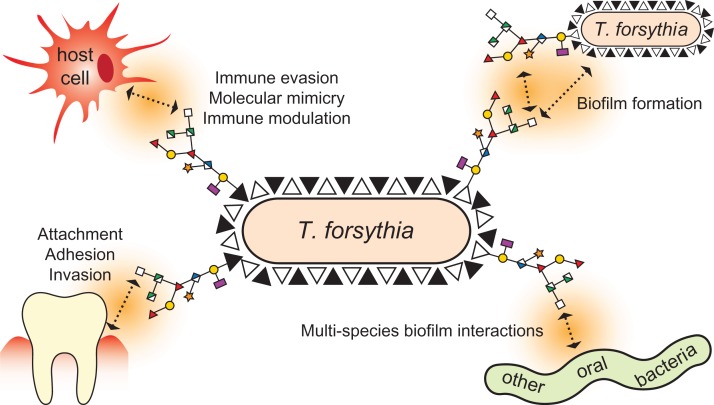Fig. 9.
Possible biological roles of the NulOs of the T. forsythia S-layer glycan. Representing the terminal sugars on the outermost surface structure of T. forsythia strains, Pse or Leg could have several functions. As previous studies have found the terminal trisaccharide of the S-layer glycan to be involved in the modulation of cytokine release and the suppression of Th17 responses, we hypothesize that the different NulOs displayed by T. forsythia strains are implicated in this phenomenon. Apart from the effect on monospecies biofilm formation described in this paper, the terminal NulOs are likely to play a role in the bacterium's interactions with other species of the subgingival microbiota. Furthermore, they could exert an influence on how the bacterium attaches to periodontal surfaces and how it invades host tissue. The variation of the NulO type among various T. forsythia strains may reflect a special ‘fit’ with only certain hosts and/or microenvironments. This figure is available in black and white in print and in color at Glycobiology online.

